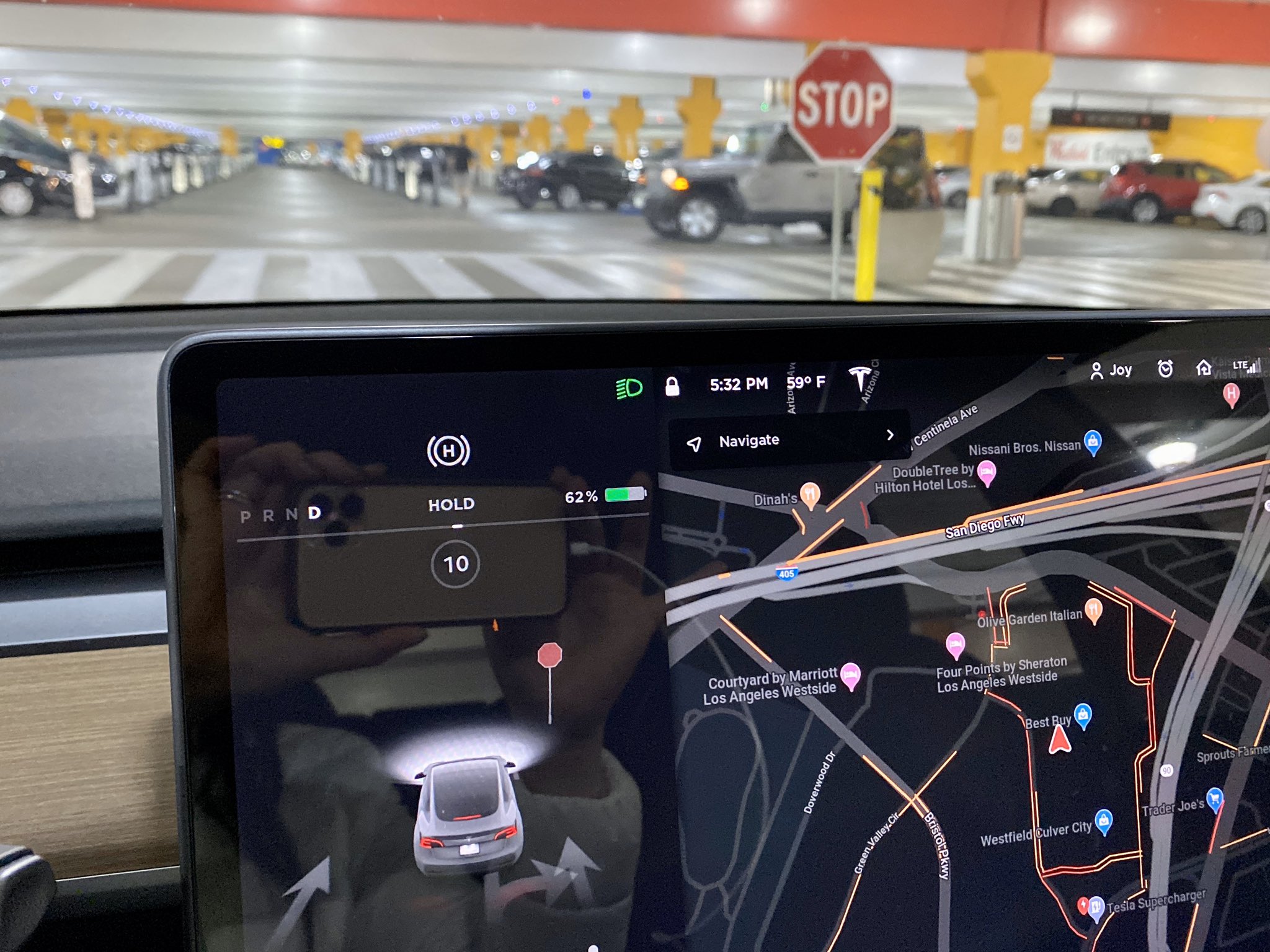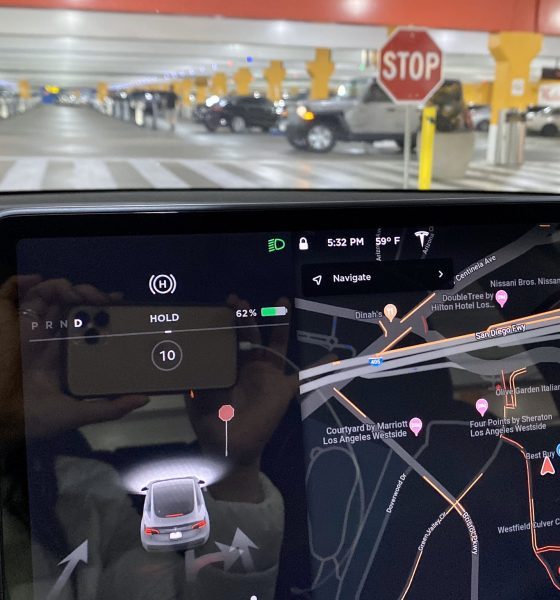

News
Tesla’s next-gen Autopilot and infotainment hardware already in development: report
Tesla is not done rolling out its Hardware 3 retrofits to vehicles with HW2 and HW2.5 yet, but the company is already at work developing its next-generation hardware, according to a recent report from Chinese media. This new hardware will reportedly be produced using the 7 nm process, and it will be utilized for numerous functions, from Autopilot and Full Self-Driving to infotainment features.
A new report from China Times has noted that Tesla is working with Taiwan Semiconductor Manufacturing Co. (TSMC) to develop its next-generation hardware. Elon Musk alluded to these efforts last year during Autonomy Day, when he stated that while Hardware 3 will be revolutionary, Tesla is already working on a next-generation chip that will be around 3x better than HW3. Musk noted then that the yet-to-be-announced chip was about two years from production.
Interestingly enough, the report from the Times mentioned that the next-gen 7 nm Tesla chip will be set for mass production in the fourth quarter of 2021, over two years after Autonomy Day. The report also suggested that a trial production run for the next-generation chips could begin as early as the fourth quarter of this year, though these units will likely be used for validation.
“Broadcom and Tesla are cooperating to develop ultra-large HPC chips for automotive use. They are produced using TSMC’s 7nm process and are the first to use TSMC’s SoW advanced packaging technology. Each 12-inch wafer can only be cut out. 25 chips. Production of the new chips will begin in the fourth quarter, with an initial production of about 2,000 wafers. It is expected to enter the full mass production stage after the fourth quarter of next year,” the report read.
According to the Times, Tesla’s next-gen chip will be utilized for a variety of in-vehicle functions, including Autopilot’s driver-assist features and entertainment functions. Thanks to its efficient design, the 7 nm next-gen chip will likely be optimized for full self-driving as well, which should benefit the company’s ramp of its planned Robotaxi network.
“It is understood that the HPC chip created by Broadcom for Tesla will become the core computing special application chip (ASIC) for Tesla electric vehicles in the future, which can be used to control and support advanced driving assistance systems, electric vehicle power transmission, and car entertainment. The four major application areas of automotive electronics such as systems and car body electronic components will further support the real-time computing required for self-driving cars. The HPC chip jointly developed by Broadcom and Tesla should be an important cooperation project from electric vehicles to self-driving cars,” the Times wrote.
Tesla is yet to complete the Hardware 3 retrofit of vehicles that were bought with the Full Self-Driving suite and Hardware 2 and 2.5, with owners from areas such as Europe and Australia noting that they are yet to receive the promised HW3 unit. Considering that the company appears to be making progress on the development of its next-generation hardware, it would benefit the EV community greatly if Tesla could expedite its HW3 retrofit ramp to vehicles across the globe. This is especially notable considering that the company is making headway in its efforts to roll out a feature-complete version of its FSD suite as soon as possible.
Read the China Times‘ full report on Tesla’s next-generation hardware here.

News
Tesla FSD fleet is nearing 7 billion total miles, including 2.5 billion city miles
As can be seen on Tesla’s official FSD webpage, vehicles equipped with the system have now navigated over 6.99 billion miles.

Tesla’s Full Self-Driving (Supervised) fleet is closing in on almost 7 billion total miles driven, as per data posted by the company on its official FSD webpage.
These figures hint at the massive scale of data fueling Tesla’s rapid FSD improvements, which have been quite notable as of late.
FSD mileage milestones
As can be seen on Tesla’s official FSD webpage, vehicles equipped with the system have now navigated over 6.99 billion miles. Tesla owner and avid FSD tester Whole Mars Catalog also shared a screenshot indicating that from the nearly 7 billion miles traveled by the FSD fleet, more than 2.5 billion miles were driven inside cities.
City miles are particularly valuable for complex urban scenarios like unprotected turns, pedestrian interactions, and traffic lights. This is also the difference-maker for FSD, as only complex solutions, such as Waymo’s self-driving taxis, operate similarly on inner-city streets. And even then, incidents such as the San Francisco blackouts have proven challenging for sensor-rich vehicles like Waymos.
Tesla’s data edge
Tesla has a number of advantages in the autonomous vehicle sector, one of which is the size of its fleet and the number of vehicles training FSD on real-world roads. Tesla’s nearly 7 billion FSD miles then allow the company to roll out updates that make its vehicles behave like they are being driven by experienced drivers, even if they are operating on their own.
So notable are Tesla’s improvements to FSD that NVIDIA Director of Robotics Jim Fan, after experiencing FSD v14, noted that the system is the first AI that passes what he described as a “Physical Turing Test.”
“Despite knowing exactly how robot learning works, I still find it magical watching the steering wheel turn by itself. First it feels surreal, next it becomes routine. Then, like the smartphone, taking it away actively hurts. This is how humanity gets rewired and glued to god-like technologies,” Fan wrote in a post on X.
News
Tesla starts showing how FSD will change lives in Europe
Local officials tested the system on narrow country roads and were impressed by FSD’s smooth, human-like driving, with some calling the service a game-changer for everyday life in areas that are far from urban centers.

Tesla has launched Europe’s first public shuttle service using Full Self-Driving (Supervised) in the rural Eifelkreis Bitburg-Prüm region of Germany, demonstrating how the technology can restore independence and mobility for people who struggle with limited transport options.
Local officials tested the system on narrow country roads and were impressed by FSD’s smooth, human-like driving, with some calling the service a game-changer for everyday life in areas that are far from urban centers.
Officials see real impact on rural residents
Arzfeld Mayor Johannes Kuhl and District Administrator Andreas Kruppert personally tested the Tesla shuttle service. This allowed them to see just how well FSD navigated winding lanes and rural roads confidently. Kruppert said, “Autonomous driving sounds like science fiction to many, but we simply see here that it works totally well in rural regions too.” Kuhl, for his part, also noted that FSD “feels like a very experienced driver.”
The pilot complements the area’s “Citizen Bus” program, which provides on-demand rides for elderly residents who can no longer drive themselves. Tesla Europe shared a video of a demonstration of the service, highlighting how FSD gives people their freedom back, even in places where public transport is not as prevalent.
What the Ministry for Economic Affairs and Transport says
Rhineland-Palatinate’s Minister Daniela Schmitt supported the project, praising the collaboration that made this “first of its kind in Europe” possible. As per the ministry, the rural rollout for the service shows FSD’s potential beyond major cities, and it delivers tangible benefits like grocery runs, doctor visits, and social connections for isolated residents.
“Reliable and flexible mobility is especially vital in rural areas. With the launch of a shuttle service using self-driving vehicles (FSD supervised) by Tesla in the Eifelkreis Bitburg-Prüm, an innovative pilot project is now getting underway that complements local community bus services. It is the first project of its kind in Europe.
“The result is a real gain for rural mobility: greater accessibility, more flexibility and tangible benefits for everyday life. A strong signal for innovation, cooperation and future-oriented mobility beyond urban centers,” the ministry wrote in a LinkedIn post.
News
Tesla China quietly posts Robotaxi-related job listing
Tesla China is currently seeking a Low Voltage Electrical Engineer to work on circuit board design for the company’s autonomous vehicles.

Tesla has posted a new job listing in Shanghai explicitly tied to its Robotaxi program, fueling speculation that the company is preparing to launch its dedicated autonomous ride-hailing service in China.
As noted in the listing, Tesla China is currently seeking a Low Voltage Electrical Engineer to work on circuit board design for the company’s autonomous vehicles.
Robotaxi-specific role
The listing, which was shared on social media platform X by industry watcher @tslaming, suggested that Tesla China is looking to fill the role urgently. The job listing itself specifically mentions that the person hired for the role will be working on the Low Voltage Hardware team, which would design the circuit boards that would serve as the nervous system of the Robotaxi.
Key tasks for the role, as indicated in the job listing, include collaboration with PCB layout, firmware, mechanical, program management, and validation teams, among other responsibilities. The role is based in Shanghai.
China Robotaxi launch
China represents a massive potential market for robotaxis, with its dense urban centers and supportive policies in select cities. Tesla has limited permission to roll out FSD in the country, though despite this, its vehicles have been hailed as among the best in the market when it comes to autonomous features. So far, at least, it appears that China supports Tesla’s FSD and Robotaxi rollout.
This was hinted at in November, when Tesla brought the Cybercab to the 8th China International Import Expo (CIIE) in Shanghai, marking the first time that the autonomous two-seater was brought to the Asia-Pacific region. The vehicle, despite not having a release date in China, received a significant amount of interest among the event’s attendees.








